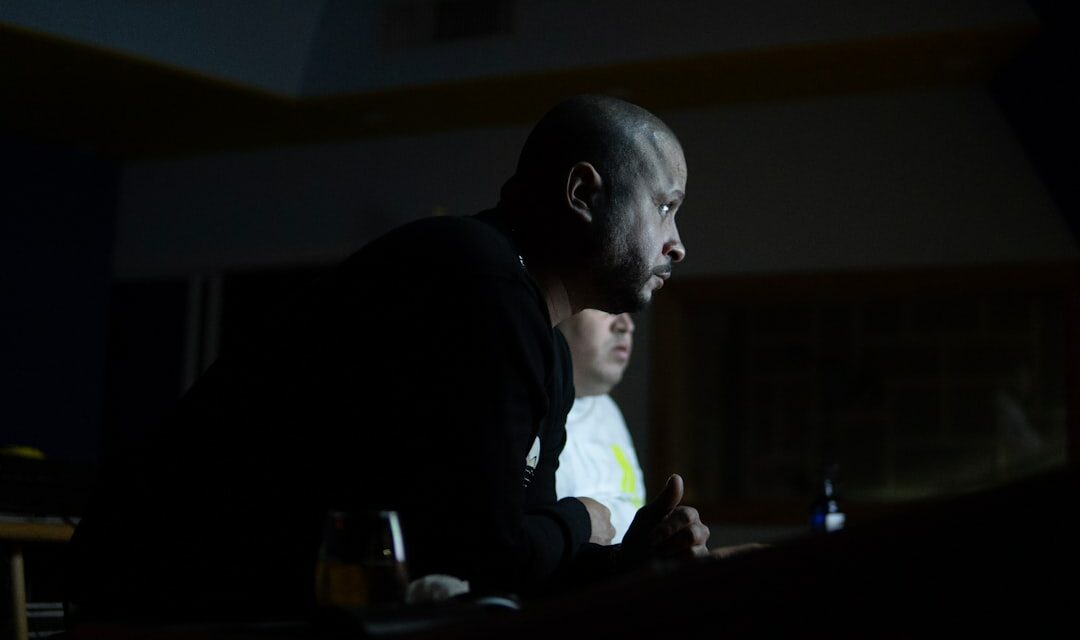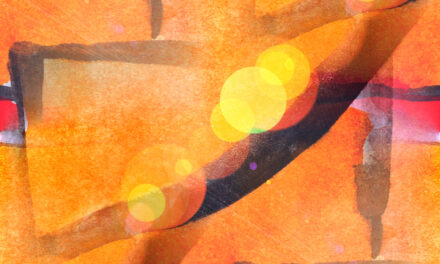Performance art is a form of artistic expression that combines visual art with dramatic performance. It is a medium that blurs the boundaries between traditional art forms such as painting, sculpture, and theatre, and often utilises the artist’s body as a primary tool for communication. Performance art can manifest in various forms, including live performances, installations, and happenings, and may incorporate elements of dance, music, and spoken word.
The defining characteristic of performance art is its emphasis on the live, unscripted, and often unpredictable nature of the performance, which creates a unique and immersive experience for both the artist and the audience. Performance art is frequently employed as a means of exploring social, political, and personal issues, and can be a powerful tool for challenging societal norms and stimulating thought and discussion. It enables artists to engage with their audience in a direct and immediate manner, breaking down the barriers between the creator and the viewer.
Performance art can be deeply personal and emotional, as it often involves the artist using their own body as a canvas for expression, making it a raw and intimate form of artistic communication. Overall, performance art is a dynamic and evolving medium that continues to push the boundaries of what is considered art, and challenges both artists and audiences to think differently about the role of art in society.
Summary
- Performance art is a form of artistic expression that combines visual art with dramatic performance, often involving the artist’s body as a medium.
- Performance art has its roots in the early 20th century avant-garde movements, but it gained prominence in the 1960s and 1970s as a response to the traditional art world.
- Key figures in performance art include Marina Abramović, Yoko Ono, and Chris Burden, who pushed the boundaries of the art form and challenged societal norms.
- Different forms of performance art include body art, durational performance, and interactive performance, each offering unique ways for artists to engage with their audience.
- Audience participation is a crucial element of performance art, blurring the lines between performer and spectator and creating a shared experience that challenges traditional notions of art.
The History of Performance Art
The Birth of Performance Art
Performance art as we know it today began to take shape in the 1960s and 1970s, with artists such as Yoko Ono, Marina Abramović, and Joseph Beuys leading the way in pushing the boundaries of what could be considered art. These artists used their bodies as a means of artistic expression, often engaging in extreme or provocative acts in order to challenge societal norms and provoke a reaction from their audience.
Feminist Performance Art and Political Protest
The 1970s also saw the rise of feminist performance art, with artists such as Carolee Schneemann and Ana Mendieta using their bodies to explore issues of gender, sexuality, and identity. This period also saw the emergence of performance art as a form of political protest, with artists using their bodies as a means of resistance against oppressive regimes and social injustices.
Evolution and Innovation
In more recent years, performance art has continued to evolve and adapt to the changing cultural landscape, with artists using new technologies and multimedia platforms to create immersive and interactive experiences for their audiences. Overall, the history of performance art is one of innovation, experimentation, and a relentless pursuit of pushing the boundaries of what is considered art.
Key Figures in Performance Art

Performance art has been shaped by a number of key figures who have pushed the boundaries of what is considered art and have paved the way for future generations of artists. One such figure is Marina Abramović, whose groundbreaking performances have challenged notions of endurance, vulnerability, and the relationship between artist and audience. Her work often involves extreme physical or emotional acts that push her body to its limits, creating a raw and intense experience for both herself and her audience.
Another influential figure in performance art is Yoko Ono, whose conceptual and often controversial performances have challenged traditional notions of art and have inspired countless artists to think outside the box. Joseph Beuys is another key figure in the history of performance art, known for his use of unconventional materials and his belief in the power of art to effect social change. His performances often involved ritualistic actions and symbolic gestures that sought to engage with issues of politics, ecology, and spirituality.
Carolee Schneemann is also a pioneering figure in feminist performance art, using her body as a means of exploring issues of gender, sexuality, and identity. Her work has been instrumental in challenging societal norms and advocating for greater visibility and representation for women in the art world. These key figures have all played a crucial role in shaping the trajectory of performance art, and their influence continues to be felt in the work of contemporary artists who seek to push the boundaries of artistic expression.
The Different Forms of Performance Art
Performance art encompasses a wide range of different forms and styles, each with its own unique characteristics and methods of expression. One common form of performance art is live performance, which involves the artist presenting a scripted or improvised piece in front of an audience. This can take many different forms, including solo performances, group performances, or collaborations with other artists from different disciplines such as music or dance.
Another form of performance art is installation art, which involves creating immersive environments or interactive experiences that invite the audience to engage with the artwork in a physical or sensory way. Happenings are another form of performance art that emerged in the 1960s, involving spontaneous and unscripted events that blur the lines between art and everyday life. These events often take place in public spaces and involve audience participation, creating a sense of unpredictability and immediacy that challenges traditional notions of artistic presentation.
Performance art can also take the form of durational performances, which involve the artist engaging in a prolonged act or series of actions over an extended period of time. This form of performance art often involves endurance and physicality, creating a sense of intimacy and intensity for both the artist and the audience. Overall, performance art encompasses a diverse range of forms and styles that continue to evolve and adapt to the changing cultural landscape.
The Role of Audience Participation in Performance Art
Audience participation plays a crucial role in performance art, as it blurs the lines between artist and viewer and creates a sense of immediacy and intimacy that is unique to this medium. In many performance art pieces, audience members are invited to engage with the artwork in a physical or sensory way, breaking down the traditional barriers between creator and viewer. This can create a sense of shared experience and connection between the artist and their audience, as they become active participants in the creation and interpretation of the artwork.
Audience participation also challenges traditional notions of passive spectatorship, encouraging viewers to think critically about their role in relation to the artwork and to consider how their own actions can shape the meaning and impact of the performance. In some cases, audience participation in performance art can be confrontational or challenging, as artists seek to provoke a reaction or response from their viewers. This can create a sense of discomfort or unease for some audience members, as they are forced to confront difficult or controversial issues through their participation in the artwork.
However, this sense of discomfort can also be seen as an integral part of the artistic experience, as it encourages viewers to think critically about their own beliefs and assumptions. Overall, audience participation plays a vital role in performance art, creating a dynamic and interactive experience that challenges traditional notions of artistic presentation and invites viewers to engage with the artwork in a personal and meaningful way.
Controversies and Challenges in Performance Art

The Legal Challenges of Performance Art
Additionally, some performance art pieces have been met with legal challenges due to their confrontational nature or because they have pushed legal boundaries.
Funding and Support: A Significant Hurdle
Another challenge facing performance artists is the issue of funding and support for their work. Performance art often requires significant resources in terms of time, space, materials, and personnel. However, funding for performance art can be difficult to secure due to its unconventional nature and its tendency to challenge traditional artistic conventions.
The Struggle for Opportunities and Financial Sustainability
This can make it difficult for performance artists to find opportunities to showcase their work or to sustain themselves financially while pursuing their artistic practice.
The Future of Performance Art
The future of performance art is an exciting one, as artists continue to push boundaries and explore new ways of engaging with their audiences. With advancements in technology and multimedia platforms, performance artists are finding new ways to create immersive and interactive experiences that challenge traditional notions of artistic presentation. Virtual reality, augmented reality, and interactive installations are just some examples of how performance artists are using new technologies to create dynamic and engaging experiences for their audiences.
Furthermore, performance art continues to be a powerful tool for addressing social and political issues, as artists use their work to provoke thought and discussion about important topics such as gender equality, racial justice, environmental sustainability, and mental health awareness. As society continues to evolve, so too will performance art, as artists seek new ways to engage with their audiences and create meaningful connections through their work. In conclusion, performance art is a dynamic and evolving medium that continues to push boundaries and challenge traditional notions of artistic expression.
With its emphasis on live, unscripted performances and its willingness to engage with controversial or taboo subjects, performance art offers a unique opportunity for artists to connect with their audiences in a direct and meaningful way. As technology continues to advance and societal issues continue to evolve, so too will performance art continue to adapt and innovate in order to create immersive experiences that provoke thought, discussion, and emotional connection with audiences around the world.
If you are interested in learning more about different art movements, you may want to check out an article on Expressionism. This art movement, which originated in Germany in the early 20th century, focused on expressing emotions and feelings through art. It was a reaction against the more traditional and realistic styles of art that were popular at the time. The article provides a comprehensive overview of Expressionism and its impact on the art world.
FAQs
What is performance art?
Performance art is a form of art in which the artist uses their body, actions, and presence as the medium for artistic expression. It often involves live performances in front of an audience and can incorporate elements of theatre, dance, music, and visual arts.
What are the origins of performance art?
Performance art has its roots in the early 20th century, with artists such as Dadaists, Futurists, and Surrealists experimenting with live performances as a means of artistic expression. It gained prominence in the 1960s and 1970s as a response to the traditional boundaries of visual art and the desire to engage with the audience in a more direct and immediate way.
What are some key characteristics of performance art?
Performance art often blurs the boundaries between art and life, challenges societal norms, and explores themes such as identity, politics, and the human condition. It is often ephemeral in nature, with the live performance being the primary focus, although documentation and artifacts may also be created as part of the artistic process.
Who are some notable performance artists?
Some notable performance artists include Marina Abramović, Yoko Ono, Joseph Beuys, Carolee Schneemann, and Chris Burden. These artists have made significant contributions to the development and popularisation of performance art as a respected and influential art form.
How is performance art different from other art forms?
Performance art differs from traditional visual arts in that it prioritises the live, temporal, and experiential aspects of the artistic process. It often involves the direct engagement of the audience and can challenge the conventions of traditional art forms such as painting, sculpture, and photography.




